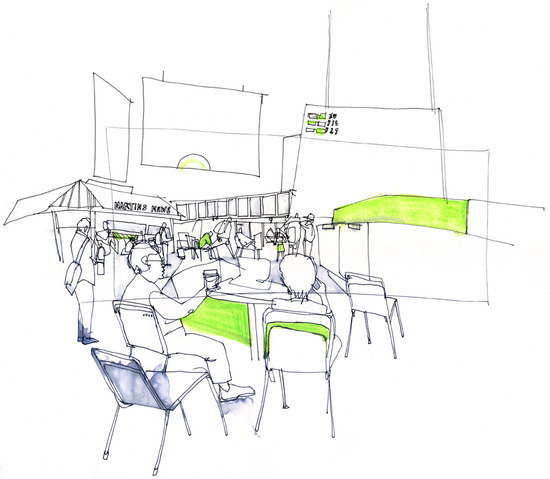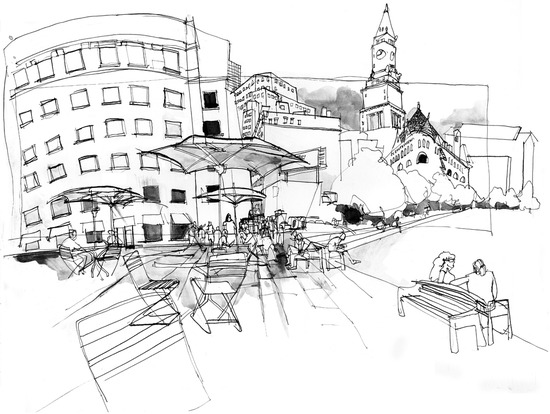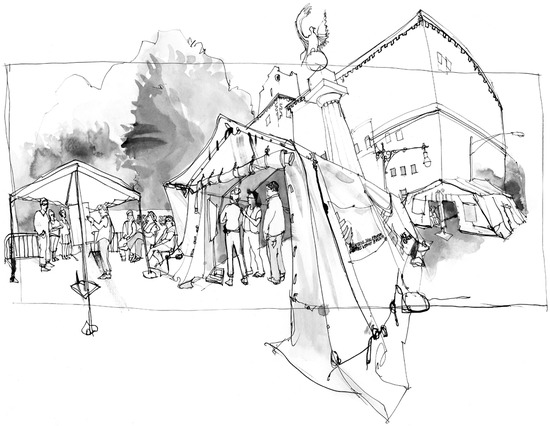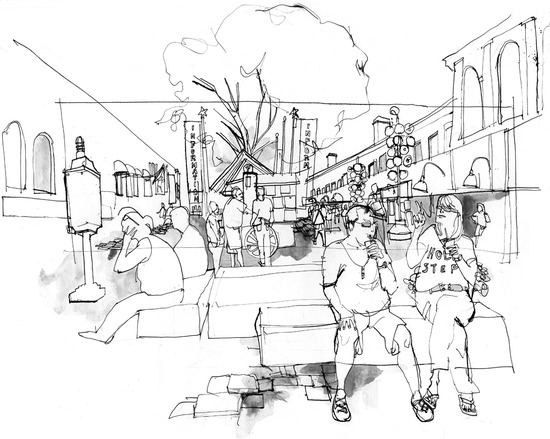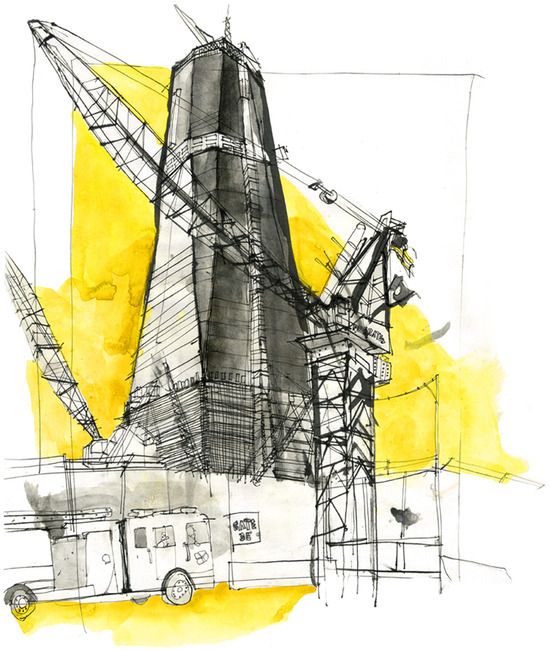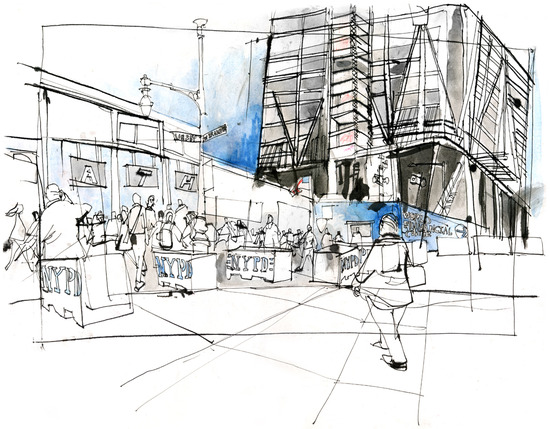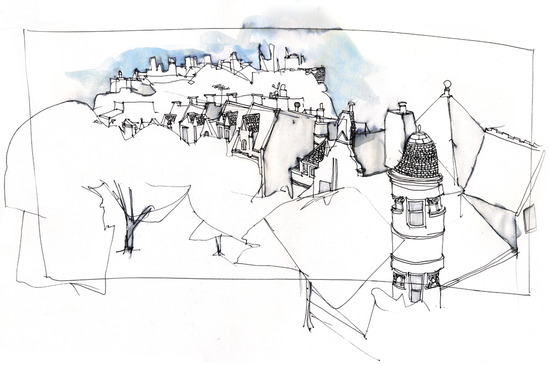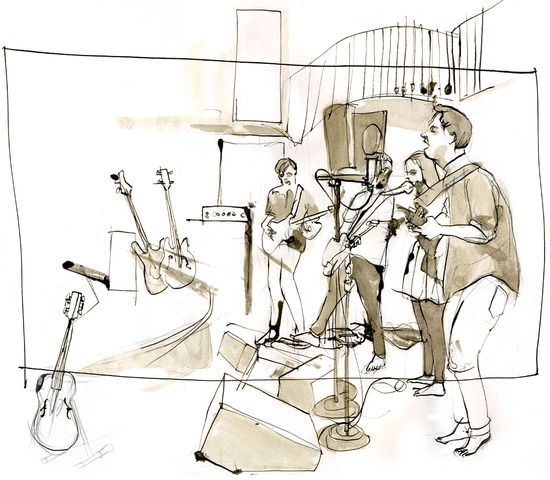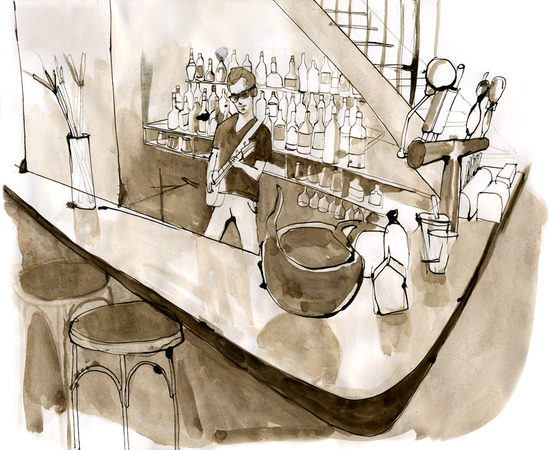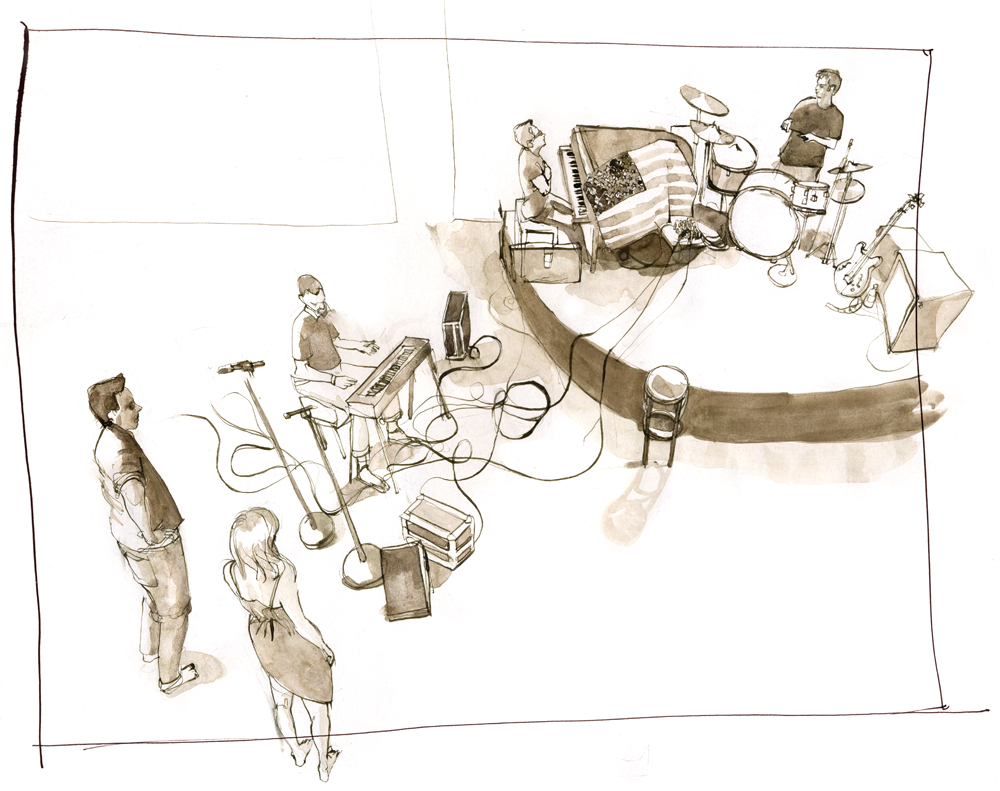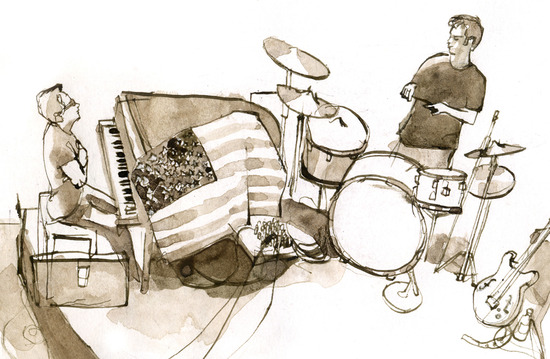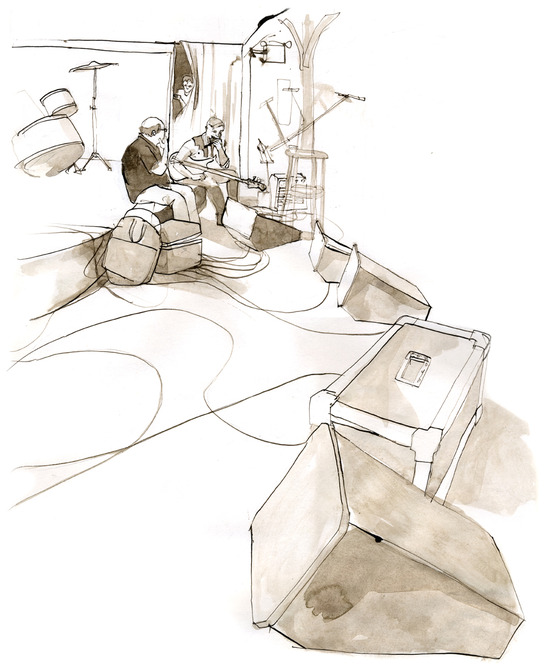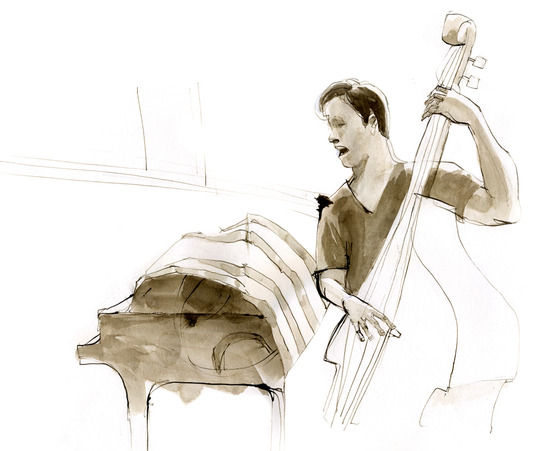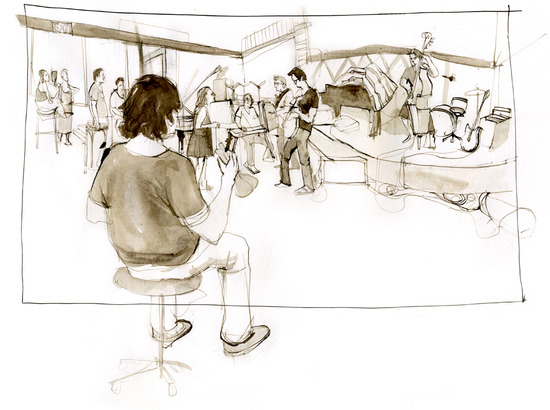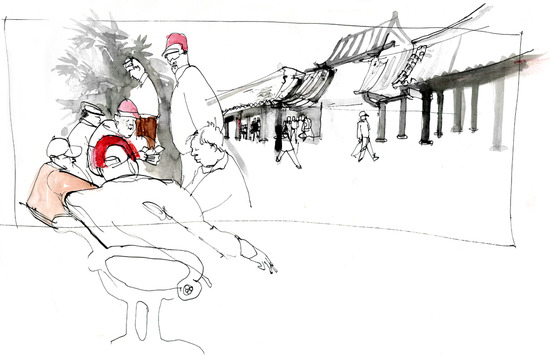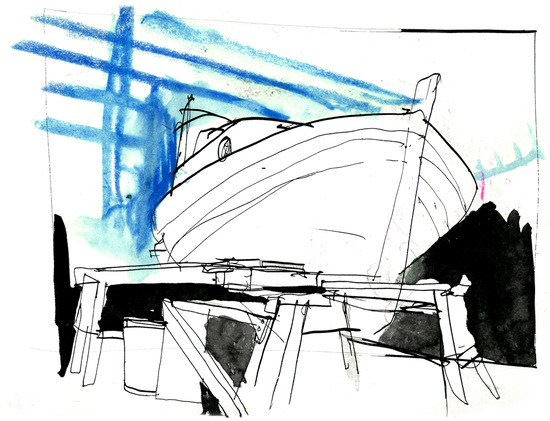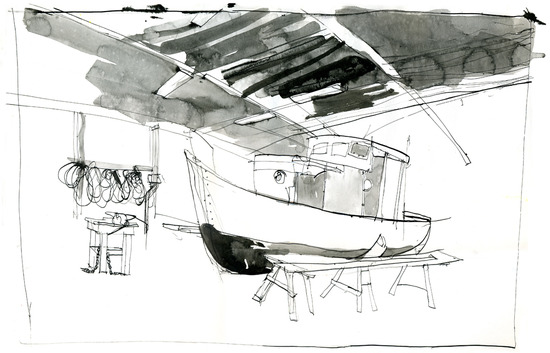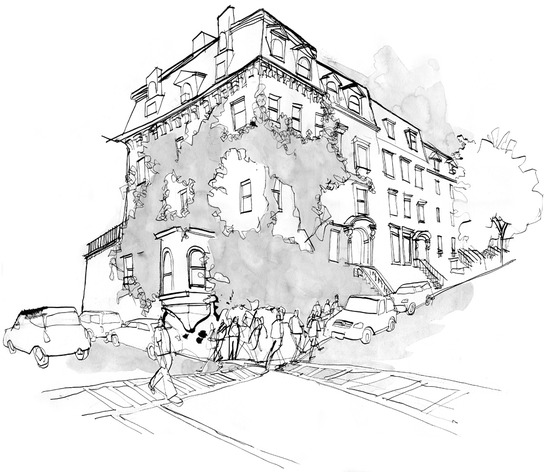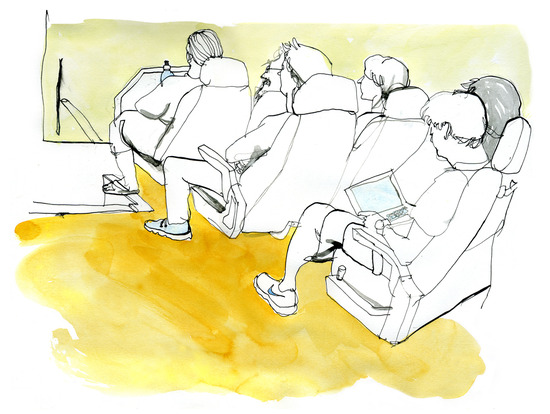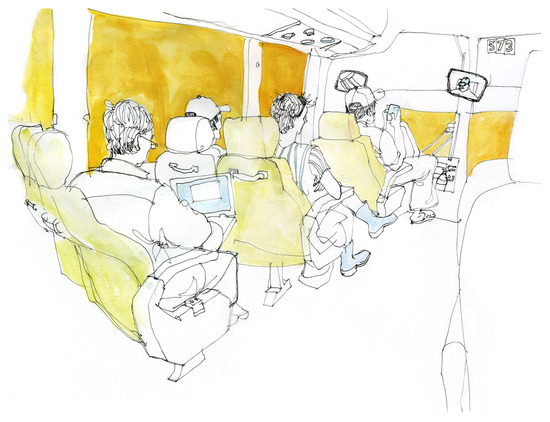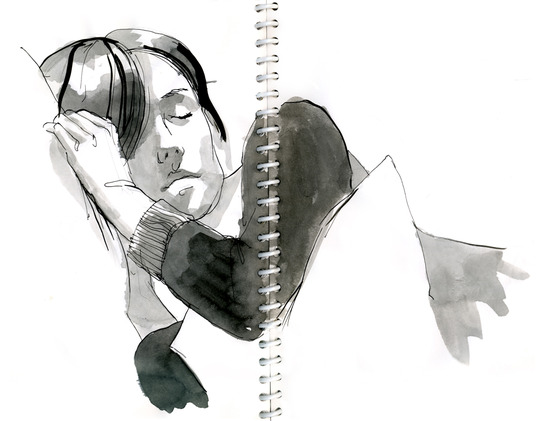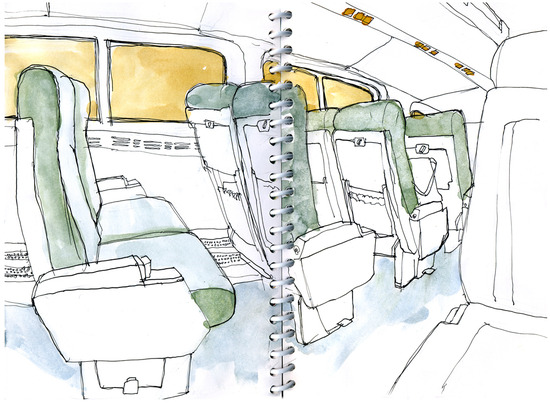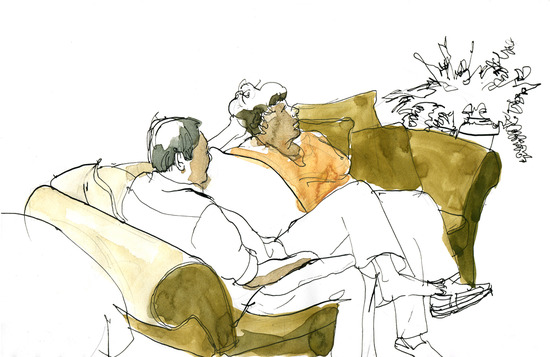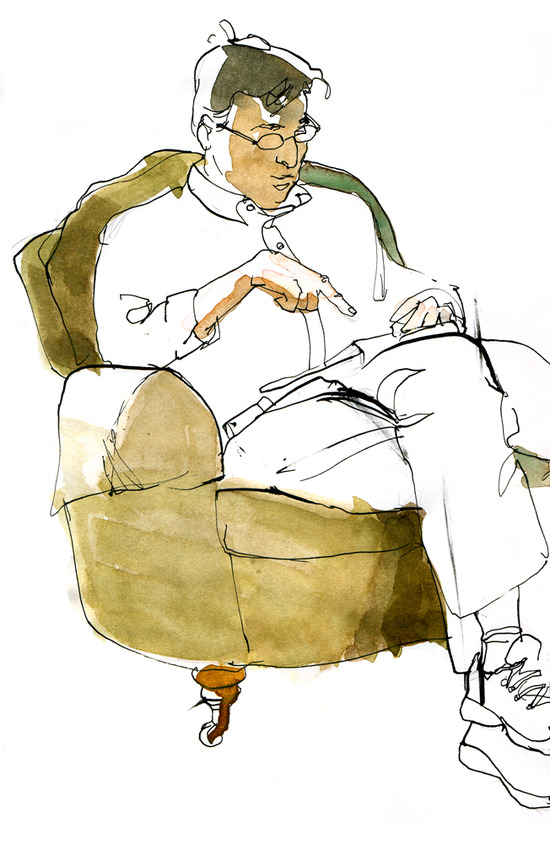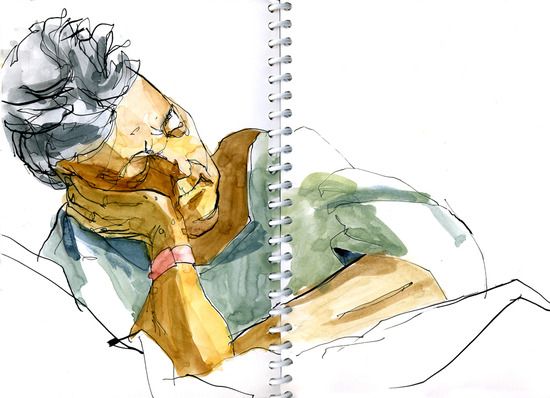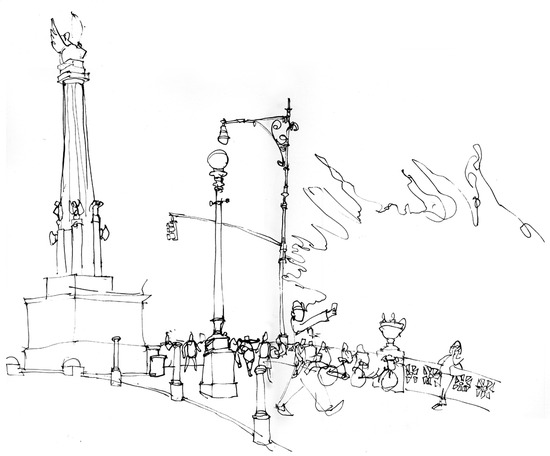Fighting the Good Fight: Doctors Without Borders
Doctors Without Borders is an international medical and humanitarian organization that assists people who's lives are "threatened by violence, neglect, or catastrophe." The organization set up a free interactive exhibit called "Starved for Attention" at Prospect Park in Brooklyn. With images taken by VII Photo (a group of award winning photojournalists), the show was housed in a tent recreating a field hospital. The movement addresses the serious issues of childhood malnutrition in the developing world. I sketched these special individuals as they shared with the public their passion to fight this crisis.
According to Doctors Without Borders, "Almost 200 million children under 5 years of age are affected by malnutrition, with 90 percent living in sub-Saharan Africa and South Asia. And at any moment at least 20 million children suffer from the most life-threatening form of severe malnutrition...In fact, malnutrition contributes to one third of the 8.8 million children under five who die every year."
Currently the governments of the U.S., Canada, E.U., Japan and Australia provide humanitarian food aid to developing countries. However, the cereal-based flours currently being donated do not provide the proper nutritional needs for infants and children. Without a change in policy and proper resources, these children will continue suffering from malnutrition.
The exhibit filled my heart with empathy moving me to sign their petition which demands reforms in U.S. food aid policy. To learn more and join the fight against malnutrition you can visit the exhibit at Prospect Park (at Grand Army Plaza) Sept 21-23 or online at StarvedForAttention.org.
Hidden Spaces
After the Dust Settles
Bomb Squad trucks and sirens roared down Broadway for over half an hour. I peered out the window of my Midtown apartment to see crowds of people fleeing uptown. I sensed that something was terribly wrong. We all remember where we were on Sept 11, 2001. It is a day that has left an indelible mark in the memories of most Americans. Ten years later, I wanted to commemorate those who lost their lives that day—as well as those who work tirelessly to ensure that an attack of this magnitude never occurs again.
Two days after the original towers fell, I recall seeing firefighters riding in a flatbed pickup truck from ground zero covered head to toe in dust. At the sight, every pedestrian on the street immediately stopped what they were doing to applaud the passing heros. For weeks, the smell of asbestos filled the air of Manhattan; it was difficult to stay outdoors without our eyes and lungs burning.
Not only are the structures impressive but so too is the energy that surrounds them. Tourists from every nation come to see this impressive architectural feat. As the wounds are still healing in the American heart, these new towers have become a symbol of restoration. Regardless of your stance on America's efforts in Iraq and Afghanistan, the WTC reconstruction is a testament to the resilience and determination of the American people. Our story has always been one of conviction and hope. This case is no exception.
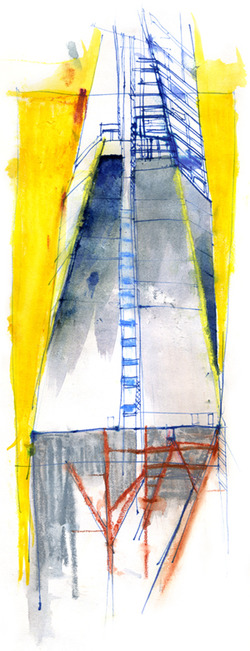
In an age of anti-American skepticism, it's trendy to believe that fear of radical ideology derives solely from the West. But the problem is much deeper than this. Individuals from all religions, cultures, and beliefs have been victims of cowardly acts of terror.
As I began thinking globally about those who have experienced extreme grief as a result of terrorism, I came across an organization called The Global Survivors Network. GSN's mission is to give a voice to these victims; encouraging them to channel their grief in order to confront hatred. By sharing their stories and experiences, they are able to educate others about the consequences of violence stemming from extreme ideology. I was very moved by GSN's trailer for their upcoming new documentary, "Killing In The Name," which sheds light on issues that aren't often given attention.
As I was sketching at Ground Zero earlier this week, a passing journalist asked me if the sight of the new towers brought about sadness as a remembrance of that day. I explained that 9/11 was a tragic event—which I hope never happens again—but life is filled with unfortunate, unexplainable circumstances. What matters is how we respond and rebuild after the dust settles.
Zach Williams and The Bellow
I recently had the privilege of sitting in on a recording session for Brooklyn-based musicians Zach Williams & the Bellow's new record. Their music is a beautiful avenue through which they express everything from tragedy, hope, betrayal and redemption in an authentic, honest way. After playing several shows at Rockwood Music Hall over the last few years, owner Ken Rockwood let Zach & The Bellow turn his space into a full-on recording studio for several days. It was the perfect, familiar venue where they could begin the process of solidifying something special— or "capturing thunder in a shoebox," as they rightfully put it.
Jason Pipkin plays from behind the bar.
Observing and sketching Zach & The Bellow in the midst of the creation process was truly thrilling. There was a tangible creative energy in the space that evening; I knew I was witnessing something unique. The sketches in this entry are parts of what I came away with.
Producer Charlie Peacock and bassist Ben Mars discuss different riff variations during a break.
To learn more about Zach Williams & the Bellow, you can read their recent interview on Noisetrade. Let your heart be stilled and stirred through their music and stories, and consider supporting these extremely talented, humble musicians.
Bright Exposure
There are areas of the U.S. where it's easy to feel like a foreigner. Chinatown, San Francisco, is one of those places. This beautifully vibrant neighborhood is home to around 100,500 residents. In fact, It's the largest Chinese community outside of Asia—with many of the residents being native Cantonese speakers from the Guangdong Province in southeast China.
Though I'm half Chinese, I'm completely American. Traditional Chinese culture and customs are foreign to me. Often times people ask "Why don't you speak Chinese?" But growing up in the suburbs of New England, opportunities to be immersed in Chinese culture were hard to come by. I'm not upset about it, that's simply the way things were.
One thing is for sure, I've always questioned where I fit in—particularly when it comes to race and ethnicity. In a way, I think I wanted to relate to one particular people group or identify with a single race, perhaps for the sake of convenience. It wasn't until I arrived in New York, the ultimate melting pot, that I finally found freedom as a mixed-race person. I didn't have to be one thing or another. And that was okay.
In Chinatown SF, I was drawn to one of the few outdoor public spaces in the neighborhood, Portsmouth Square. Hundreds of elderly men and women gathered around stone tables to play Mahjong and other various card games. It fascinated me to watch them. They reminded me of my own grandfather, who too, came to America from Guangdong Province. Observing and sketching them was like peering through a window into my Grandfather's life.
As I sat sketching a quick thumbnail, a man in the foreground accidentally dropped his cigarette butt on my sketch book. It left a small burn mark as evidenced on the drawing above. He then snickered something at me in Cantonese waving his hand in an ambiguous manner. I simply laughed it off; the man acted just like my grandfather, who had similar mannerisms. Though I was the foreigner, memories of Grandpa Chen enabled me to appreciate the men I sketched.
Being an outsider caused me to reflect on my own identity and increased my appreciation for others. Greater exposure created a brighter world.
CURRENT HISTORY
Often times we discard our old possessions when they are no longer fashionable. The National Park at Hyde Street Pier in San Francisco does quite the opposite as they take tremendous time and care in the historical preservation of boats. During a recent trip to Bay area, I had been sketching along the pier and had to take shelter from the rain in the Small Boat Shop. I discovered a beautiful vessel surrounded by scrap wood and tools. An park employee named Karnell came out of his workshop and shared with me the background of this boat, the Eva B.
One day a man walking along Hyde Street Pier immediately recognized the Eva B. It had belonged to his family (the Batchelders) between 1936-1950 and was now undergoing restoration by the park. Delighted that part of his family's past was being preserved, the man later returned with photos of the Eva B to show the park's boat makers. These images proved to be invaluable to the restoration process as they gave clues to the boat's original construction and appearance.
Karnell shared an album of these photos. Nearly every picture was filled with laughs and smiles. Clearly the Batchelders had many fond memories and adventures on the Eva B. Built in 1936 by Manotti Pasquinucci in Sausalito, it had been used by the Batchelder family of six for summer vacations and fishing trips in the San Francisco Bay and Delta for fourteen years. Between two full time boat makers and thirty volunteers the restoration will take two years to complete.
Rather than be swept away by the currents of modernization, this historic vessel is being preserved for all to enjoy.
TO WATCH SOMEONE PASS
One night my mom called sharing that my Grandma was not well and that her kidneys were failing. She only had a few days left to live. I made a trip up to visit my family in Massachusetts to see my Grandma one last time. My uncle flew in from Texas and our family gathered around her to comfort her during her last days.
Breathing heavily, Gram could no longer speak but tried to muster up some words to acknowledge she knew we were there.
You can't help but step back as you watch someone slowly pass.
In my final moments with Gram, time stood still reminding me of the joys life
has to offer.
Drawings Arches, Building Bridges
I sat on the median where the traffic split at the Grand Army arch. It was tough to capture the movement of the cars. Drawing the essence of something is always harder than making a literal depiction.

I moved over to the entrance to Prospect Park. I struck up a conversation with the man in the foreground taking a picture with his iPhone. He was a Venezuelan from Caracas. I shared that I had traveled to Venezuela last August on a hiking/biking trip. This built an instant connection as we began to talk about the region. I find that travelling, like drawing on location, builds bridges.

